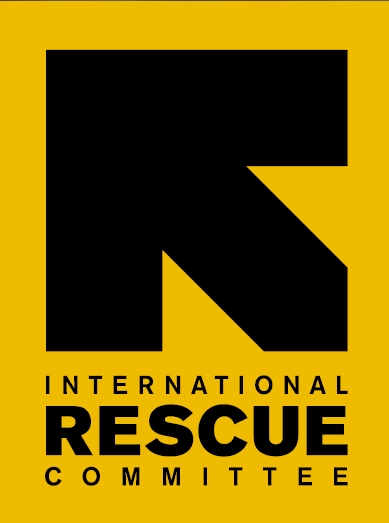A global organization dedicated to responding to the world’s most challenging humanitarian crises, the International Rescue Committee (IRC) has been helping people rebuild their lives after conflict and natural disaster for more than 80 years. And while the IRC currently operates in more than 30 countries around the globe, it’s in Afghanistan that the organization’s efforts have been the most longstanding.
Read on to learn more about the IRC, its history in Afghanistan, and what the organization has planned for its future efforts in the country.
What is the International Rescue Committee?
 A non-governmental humanitarian aid, relief, and development organization, the IRC provides both emergency aid and long-term assistance to refugees and others displaced or affected by war, persecution, and natural disaster. By focusing on key areas like health, safety, education, economic well-being, and decision-making power, the IRC works to help the world’s most vulnerable people survive and recover from crises and gain control of their futures.
A non-governmental humanitarian aid, relief, and development organization, the IRC provides both emergency aid and long-term assistance to refugees and others displaced or affected by war, persecution, and natural disaster. By focusing on key areas like health, safety, education, economic well-being, and decision-making power, the IRC works to help the world’s most vulnerable people survive and recover from crises and gain control of their futures.
How long has the IRC been working in Afghanistan?
Within weeks of the Soviet invasion of Afghanistan in 1979, the IRC was on the ground helping support the waves of Afghan refugees flooding into neighboring countries. The organization has continued to provide Afghanistan with relief and development assistance ever since. Some key dates and highlights from the IRC’s more than 30 years in Afghanistan include:
1980 – John Whitehead, then the board president of the IRC, journeyed to the makeshift refugee camps springing up just beyond the borders of Afghanistan. The situation he witnessed, in which more than 5 million Afghans had fled their homeland only to encounter terrible living conditions outside it, proved to be the catalyst for the creation of more permanent IRC operations in the country.
1988 – This year saw the official establishment of IRC operations in Afghanistan, although by this time the IRC had already been operating an extensive relief program in Afghan refugee camps for some years. Mobile clinics and dispensary tents, vocational and self-help programs, and comprehensive educational programs were some of the IRC’s most important contributions to improving the lives of Afghans displaced by conflict.
1989 – Following the Soviet withdrawal from Afghanistan, many aid agencies also left the country. The IRC was one of the few organizations to remain and to continue operating under the new regime. Working with a dedicated team of Afghan national staff members, the IRC helped with significant rebuilding efforts, including making repairs to roads and irrigation systems and establishing public health and sanitation facilities.
Early 2000s – Following yet another regime change at the start of the new millennium, millions of returning refugees and internally displaced Afghans began to make their way back to their homes. During this period, the IRC intensified its efforts to help Afghanistan rebuild and repair critical infrastructure.
2007 – Education has always been an important tool for the IRC to help people affected by crisis to regain control over their lives and build a better future for themselves. In Afghanistan in 2007, for example, the IRC trained more than 1,000 new teachers, and helped roughly 11,000 students enroll in 400 schools. In addition, nearly 2,000 people graduated from IRC-supported vocational programs.
What’s next for the IRC in Afghanistan?
Now that Afghanistan is beginning to establish and sustain modest but important gains, the IRC’s experience and expertise are more critical than ever. In 2017, the IRC published a strategic action plan for Afghanistan, outlining its program priorities through 2020 and detailing the key focus areas and actions that will help Afghanistan move into a new era of stability and prosperity. Particular desired outcomes of this plan include:
Education – Building on its extensive experience in coordinating community-based education for children, the IRC aims to ensure that Afghan children aged 6 to 14 have the opportunity to fully develop their literacy, numeracy, and social-emotional skills. Achieving this goal will involve training more teachers, supplying educational materials to classrooms, and partnering with the Ministry of Education to create an evidence-based assessment program to determine the quality of Afghan education services.
Health – Because inadequate sanitation and water supply access are leading causes of disease, the IRC plans to build safe and accessible water and sanitation facilities in the nine Afghan provinces in which the organization currently operates. Community-oriented hygiene awareness and disease prevention programs will also help curtail the spread of illness.
Economic well-being – All Afghans should have the opportunity to earn an income that is sufficient to meet basic needs, build assets, and save for the future. To this end, the IRC will continue to offer skills-based training and apprenticeship programs that prepare participants for skilled, high-demand jobs in Afghanistan’s new economy.
Power and decision-making – The IRC aims to ensure that Afghan citizens have the knowledge and power to influence the decisions that affect them. Community education programs around critical issues like property rights and land expropriation are a key component of this objective.

